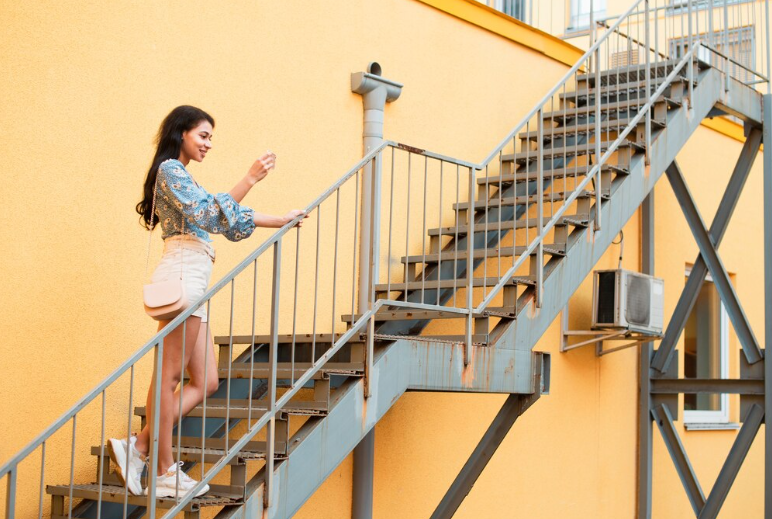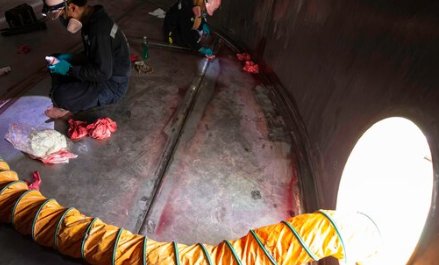
Ladders are essential tools in various industries, from construction and maintenance to warehousing and home repairs. However, they also pose significant risks if not used properly. Ladder-related injuries are all too common, and many of these accidents result from a failure to use proper climbing techniques. One of the most critical safety practices when using ladders is maintaining 3-point contact.
What is 3-Point Contact?
3-point contact refers to the practice of always having three points of contact with the ladder at all times while climbing. These points can include two hands and one foot, or two feet and one hand. By ensuring that at least three of your four possible contact points (two hands, two feet) are always connected to the ladder, you significantly increase your stability and reduce the risk of falling.
Why is 3-Point Contact Important?
1. Stability: Maintaining 3-point contact helps keep your body stable and balanced on the ladder. When you have three points of contact, your center of gravity is better distributed, reducing the likelihood of tipping over or losing your balance.
2. Preventing Falls: Falls from ladders are among the most common workplace accidents. According to the Occupational Safety and Health Administration (OSHA), falls are the leading cause of fatalities in the construction industry. Proper ladder usage, including 3-point contact, is a critical preventative measure.
3. Maintaining Control: When you have three points of contact, you can maintain better control over your movements. This control is crucial when you need to reposition yourself on the ladder, reach for tools, or move up and down.
Key Principles of 3-Point Contact
To effectively use the 3-point contact method, keep the following principles in mind:
1. Climb with Care: Always face the ladder when climbing up or down. This position allows you to see where you are placing your hands and feet, ensuring that you maintain secure contact with the ladder.
2. Use Both Hands: Use both hands to grasp the ladder rungs as you climb. Avoid carrying tools or materials in your hands. Instead, use a tool belt or hoist materials up once you are in position. This practice ensures that your hands are free to maintain contact with the ladder.
3. Step with Caution: Move one limb at a time, whether it’s a hand or a foot. For instance, if you move your right hand, keep your left hand and both feet securely in place until the right hand is firmly on the next rung. Then, move your next limb.
4. Keep Your Body Centered: Always keep your body centered between the side rails of the ladder. Leaning to one side or reaching too far can throw off your balance, making it difficult to maintain 3-point contact.
5. Avoid Distractions: Stay focused on the task at hand. Distractions can lead to a loss of concentration and cause you to lose your grip or footing. If you need to talk on a phone or communicate with someone, do so when you are on solid ground.
6. Ensure Ladder Stability: Before climbing, make sure the ladder is on a stable, level surface. If the ladder is wobbly or positioned on an uneven surface, maintaining 3-point contact becomes much more challenging, increasing the risk of an accident.
“Start Your Website Journey Today – Exclusive Hostinger Discounts!”

Common Mistakes to Avoid
Even when aware of the importance of 3-point contact, workers sometimes make mistakes that compromise their safety. Here are some common errors to watch out for:
1. Skipping Rungs: Climbing too quickly or skipping rungs can break your 3-point contact, leading to a loss of balance. Always move slowly and deliberately.
2. Overreaching: Reaching too far to the side or above your head can cause you to lose balance. Instead of overreaching, reposition the ladder so that you can maintain 3-point contact and stay safe.
3. Carrying Tools: Holding tools or materials while climbing can make it difficult to keep both hands on the ladder. Use a tool belt or rope to hoist tools instead.
4. Improper Footwear: Wearing the wrong footwear, such as flip-flops or shoes with poor grip, can cause your feet to slip off the rungs. Always wear appropriate, slip-resistant footwear when climbing ladders.
5. Inadequate Inspection: Failing to inspect the ladder before use can lead to accidents. Always check the ladder for defects, such as bent rungs, broken hinges, or damaged side rails. A defective ladder is a dangerous ladder.
Practical Tips for Maintaining 3-Point Contact
Here are some additional tips to help you practice 3-point contact consistently:
1. Plan Your Climb: Before you start climbing, plan how you will ascend and descend. Consider where you will place your hands and feet at each step, and identify any potential hazards that could disrupt your 3-point contact.
2. Stay Alert: Fatigue can impair your ability to maintain proper ladder safety. If you’re feeling tired, take a break before climbing. Staying alert will help you concentrate on maintaining 3-point contact.
3. Practice: If you’re new to ladder work or haven’t used a ladder in a while, practice climbing and descending while focusing on 3-point contact. The more you practice, the more natural it will become.
4. Use the Right Ladder: Make sure you’re using the right type and size of ladder for the task at hand. An improperly sized ladder can make it difficult to maintain 3-point contact.
Conclusion
In conclusion, maintaining 3-point contact when climbing up and down ladders is a simple yet effective way to prevent accidents and injuries. By always keeping three points of contact with the ladder, you can enhance your stability, control, and overall safety. Remember to climb with care, avoid distractions, and use proper techniques every time you use a ladder. Safety is everyone’s responsibility, and by adhering to the principles of 3-point contact, you are taking a crucial step toward ensuring a safer work environment.



